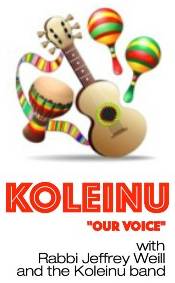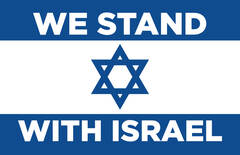- About
- Blogs
- Community
- Events
- Learn
-
Photo Gallery
- Rabbi Weill's 60th Birthday
- Purim Shpiel 2025 Pics
- Purim 2025 Pics
- HH 5785 / 2024 Pics
- Magen David Odam Ambulance Dedication Photos (2024)
-
PAST PURIM SPIELS
- Purim Shpiel 2024 - Ghosts of Purim
- Purim Spiel 2022: Shushan Incorporated (26 photos)
- Purim Spiel 2019: Young Esther Stein (12 photos)
- Purim Spiel 2018: Saving Mordecai (Rehearsal) (81 photos)
- Purim Shpiel 2017: Bye Bye Haman (189 photos)
- Purim Shpiel 2017: Bye Bye Haman (Rehearsal)
- Purim Shpiel 2016: The Queen and I (Rehearsal) (124 photos)
- Purim Shpiel 2015: Li'l Orphan Esther (87 photos)
- Purim Shpiel 2015: Li'l Orphan Esther (Rehearsal) (18 photos)
- Purim Shpiel 2014: PurimTime (70 photos)
- Purim Shpiel 2013: The Book of Esther (27 photos)
- Purim Shpiel 2012: The Trial of Haman (3 photos)
- Purim Shpiel 2011: The Megillah – A Shlock Opera (16 photos)
- Purim Shpiel 2010: The Megillah – A Thrilla' (14 photos)
- Folk and Rock Revue June 2019 (18 photos)
- Sisterhood 2018 Luncheon and Fashion Show (24 photos)
- Sisterhood Ron Balson Author Luncheon (19 photos)
- Sisterhood Chanukah Luncheon (9 photos)
- Kristallnacht 75th Anniversary (13 photos)
- Martin & Henrietta Fox Torah Project (23 photos)
- Sukkah Decorating 2015 (4 photos)
- Resources
- Support
- Worship
History of Niles Township Jewish Congregation
History of Niles TownshipJewish Congregation
This history, written in 1998, is made with the persistent urging of Seena Epstein who was one of the hostesses on the first Sisterhood Membership Committee of Niles Township Jewish Congregation.
Niles Township in the year 1948 was primarily a farm settlement of Luxembourg descendants. In fact, the National Headquarters of the German American Bund was in Morton Grove on Lincoln Avenue. The one long-term Jewish residents of over fifteen years was the family of Allan Weissburg who for many years served as President of the Park District, worked with the Niles Township Committee for Special Education and served as Mayor of Skokie in 1957. A park honors his achievements and memory at Gross Point Road north of Niles Center Road.
The newcomers to the area were young married couples with small children. The majority of the men were World War II veterans who were able to purchase their first home without a down payment through the Federal government’s FHA program. This was a welcome change from the apartment houses of Chicago. A fair number lived in the cooperative apartments in the area of downtown Skokie and the number expanded as another set of cooperative apartments were built in 1951 near Oakton Park. Small homes in Morton Grove housed many of the newcomers, a fewer number bought in Niles, and the larger Lincolnwood residences became home to others. In Skokie nothing was developed north of Main Street except on Monticello Street and on East Prairie Road. In 1949 The Niles Township Jewish Community Club was founded, drawing members from approximately fifty families in the four villages. Meetings were originally held in members’ homes. As the membership grew, meetings were held in the Village Hall on the second floor through the courtesy of Village President, George Wilson. Helen Weissburg and Inez Lavin gave the first impetus to this original women’s club. Ann Rosenberg, Dorothy Elias and Vee Godell followed as presidents. Yale Saffro and Herbert Greenwald were instrumental in starting a bowling league in 1949 which evolved into the Niles Township Jewish Men’s Club.
The Jewish children were a minority unaffiliated with any religious organization among a population that was highly church centered. In order to determine interest in a Sunday school and synagogue services, a vote was taken in 1951 at both clubs to poll the Jewish community, which now numbered more than one hundred people. This vote was introduced and spurred by just six families and on January 16, 1952 the six women addressed questionnaires in Morton and Shirley Paradise’s living room and then followed up with phone calls to anyone who did not reply within a short time. The big problem was the question of Reform, Conservation or Orthodox affiliation. However, in April the vote was taken to begin services on Friday nights in the Court Room of the Skokie Village Hall, again courtesy of Village President, George Wilson. The Chicago Board of Rabbis sent various student rabbis to conduct services beginning on May 16, 1952. There were no prayer books. But Myron Weinstein, a local funeral director as well as president of Congregation Bnai Zion in Chicago, was contacted by Dave Kaplan. Fifty new prayer books were donated to the new congregation. After each service, all the equipment was stored downstairs in a jail cell for which Dave had the key. The influx of young Jewish families into suburbia, along with a growth in religious congregations, was a phenomenon of the fifties throughout America. A companion Sisterhood was organized with Judith Silverman elected as its first president. Young mothers were at home and volunteered wholeheartedly, not only in the Sisterhood, but in Parent/Teach activities and other community endeavors. The original two Jewish Community Clubs were gradually absorbed into the new activities. It was an exciting and exhilarating time.
A committee from the Men’s Club contacted the Chicago Jewish Board of Education. Rabbi David Cedarbaum was assigned to the development in Niles Township. His wife Sophie helped with the Sisterhood, as well. The Sisterhood’s Membership Vice President, Rae Bolnick, formed a team of hostesses for each section of the township. These hostesses greeted newcomers and had them meet others in “soirees” at their homes. The local merchants’ “Welcome Lady” was the source of names for these “soirees”. Yale and Ruth Saffro ended up with fifty couples at one party in their home, all of whom joined the new synagogue that evening. Every project flourished reflecting the enthusiasm of the new Jewish community. The first fundraiser, a spaghetti party held at the Skokie Legion Hall, brought out 200 people and still elicit fond memories of the crews working together and greeting newcomers.
Because he was a graduate of the Minneapolis Talmud Torah, Arnold Bolnick was named principal for the Sunday school. Mickey Friedman, Jane Lustig and Molly gamer had sufficient credentials to become the first teachers. Arnold, also, later formed the first choir. The first Sunday school classes were held in the Niles East High School basement, then the only high school in the Skokie community. The space constituted no-walls classrooms, which were pretty noisy. Soon the Methodist Church on Kenton Avenue gave regular classroom space for the Sunday school. Fairview School became the school site in 1953, then from 1954 to 1959 Sharp Corners School was used.
The first administrative meetings of the new Jewish congregation were held at Bernie Goldfarb’s office on Touhy Avenue. But the first official business offices were in the lower level of Epson Realty Company at 4840 Dempster, now a McDonald’s restaurant. Harold DeLove was elected the first president. Alex Lavin was Chairman of the Board and Al Fink was Vice President. Working with the Chicago Board of Rabbis, the group made a final selection. They chose Rabbi Sidney Jacobs, a graduate of the Jewish Institute of Religion in New York. He espoused the Reconstruction form, a hopeful reconciliation of the Reform and Conservative worship and began his tenure on May 21, 1954. Rabbi Jacobs was succeeded by Rabbi Neil Brief on June 25, 1971.
The Village Hall quickly became too small for the number of attending congregants. Through the good graces of the superintendent of the Niles Township High School, Friday night services were held at the Niles East Auditorium. Attended by approximately 250 worshippers, the first High Holiday services were held in the Fairview School gym in 1952. Needing more space in 1953, the High Holiday services were held at the Teatro del Lago Theater in Wilmette without cost through the generosity of the owner, Sam Meyers. The Torahs were stored in the home of Leonard Elias, Religious Chairman, until the move to Oakton and Kenneth Avenues in Skokie. In 1954 the holiday services were transferred to the Niles East High School gymnasium where seats and bleachers were set up. The Glenview Community Church became the High Holiday site for 1955 and 1956. The Niles West Auditorium then became the site for the following three years until the permanent building was completed in November 1959.
A group of about twenty members contributed monies to build a commercial building on Oakton and Kenneth in Skokie. Opened on June 24, 1955, it housed the offices and Friday night and Saturday morning services were held there. This building was later sold when the present building on Dempster Street was completed. The original contributions and the profit from the sale were donated to the congregation. Sidney Fohrman, Mike Greisdorf, Milt Bass, David Kaplan, Morrie Schneider and Morris Chelfan formed the core of the Site Committee. The property was purchased through the efforts of Armond King of Skokie’s King Realtors. One parcel of land was held by a former congregant of St. Peter’s Church, who refused to sell. Father Sauer of the downtown Catholic church and the Skokie Village Building Department were able to convince him to sell. Since all of the property had originally been sold as residential units, it became necessary to have a street on the east side and two alleys vacated. Through the efforts of attorney Nat Forgan and the village fathers, a continuous piece of property was finally achieved. Nat also arranged to have the property taken off the tax rolls.
Financing was arranged with all the local banks participating, First National Bank of Skokie, Skokie Trust and Savings Bank and Old Orchard Bank. Milt Bass was named Superintendent of Construction working in conjunction with Morris Chelfan. A groundbreaking ceremony was held in December 1957. Ground was actually broken in July 1958 and the building was completed in September 1959. First services in the new sanctuary were held on October 18, 1959. Niles Township Jewish Congregation, indeed, was the result of many facets of community cooperation.
Contributed by David Kaplan and corroborated by Ruth Saffro. Shirley Paradise provided invaluable background for the original Niles Township Women’s Club and Niles Township Men’s Club.
Mon, October 20 2025
28 Tishrei 5786
"Unveiling Death"
Podcast by Rabbi Weill
![]() CHECK OUT THE LATEST EPISODE - The Hospice Volunteer: Kindness is King with Jack Lauwasser
CHECK OUT THE LATEST EPISODE - The Hospice Volunteer: Kindness is King with Jack Lauwasser
__________________________

Friday, November 7th
7:30 PM
In-Person & Zoom
__________________________
Our Worship Mishpachah
___________________
SHIRENU/OUR SONG
Join EHNTJC's Congregational Choir! We will sing at services and other special events. Led by Cantor Daniel Gale.
Please contact bill@ehnt.org if you are interested in joining.
__________________________










 Like Us On Facebook
Like Us On Facebook